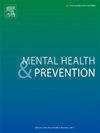Implementation of the Zero Suicide framework with suicide prevention and intimate partner violence at outpatient clinics: Implementation & clinical impact
IF 2.4
Q2 Medicine
引用次数: 0
Abstract
Objective
As the COVID-19 pandemic persisted for an extended time, rates of depression, anxiety, alcohol consumption, intimate partner violence (IPV), and suicidal ideation surged in the United States during 2020–2022. The aim is to describe the process and relevant outcomes of implementing the Zero Suicide framework with IPV intervention.
Methods
We evaluated depression and suicide screening and treatment outcomes among patients, ages 25 years and older, and IPV screening and follow-up outcomes for female adult patients who were seen at UT Physicians ambulatory primary care clinics from November 2020 to November 2021.
Results
68 % of patients (N = 13,957) were screened for depressive symptoms and suicidality using the Patient Health Questionnaire (PHQ-9). Among patients (N = 633) identified as at risk of suicide using the PHQ-9, 299 patients were further assessed using the Columbia Suicide Severity Rating Scale (C-SSRS) and/or referred to the Crisis Care Transition team for immediate follow-up. Among patients identified at risk for suicide, 92 % of patients received a safety plan. Among patients with suicidal ideation with any methods, 88 % of patients received counseling on access to lethal means to reduce the risk of suicide. 30 % of female patients (N = 4,008) were screened for IPV using the HARK (Humiliation, Afraid, Rape, Kick) assessment. All female patients (N = 82) who reported IPV were connected to services, including therapy and access to a safe place.
Conclusions
The Zero Suicide framework with IPV intervention had a positive impact on screening and treatment outcomes among our patients, indicating the feasibility in implementation and program adoption.
在门诊诊所实施预防自杀和亲密伴侣暴力的零自杀框架:实施和临床影响
随着COVID-19大流行持续时间的延长,2020-2022年美国抑郁、焦虑、饮酒、亲密伴侣暴力(IPV)和自杀意念的比例激增。目的是描述在IPV干预下实施零自杀框架的过程和相关结果。方法:我们评估了年龄在25岁及以上的患者的抑郁和自杀筛查和治疗结果,以及2020年11月至2021年11月在UT内科门诊初级保健诊所就诊的女性成年患者的IPV筛查和随访结果。结果68% (N = 13,957)的患者使用患者健康问卷(PHQ-9)筛查抑郁症状和自杀倾向。在使用PHQ-9确定有自杀风险的患者(N = 633)中,299名患者使用哥伦比亚自杀严重程度评定量表(C-SSRS)进一步评估和/或转到危机护理过渡小组进行立即随访。在确定有自杀风险的患者中,92%的患者接受了安全计划。在有任何自杀意念的患者中,88%的患者接受了关于获得致命手段以降低自杀风险的咨询。30%的女性患者(N = 4008)使用HARK(羞辱,害怕,强奸,踢)评估进行IPV筛查。所有报告IPV的女性患者(N = 82)均与服务相关,包括治疗和安全场所。结论零自杀框架结合IPV干预对患者的筛查和治疗结果有积极影响,表明该框架在实施和采用上是可行的。
本文章由计算机程序翻译,如有差异,请以英文原文为准。
求助全文
约1分钟内获得全文
求助全文
来源期刊

Mental Health and Prevention
Medicine-Psychiatry and Mental Health
CiteScore
2.10
自引率
0.00%
发文量
22
审稿时长
24 days
 求助内容:
求助内容: 应助结果提醒方式:
应助结果提醒方式:


